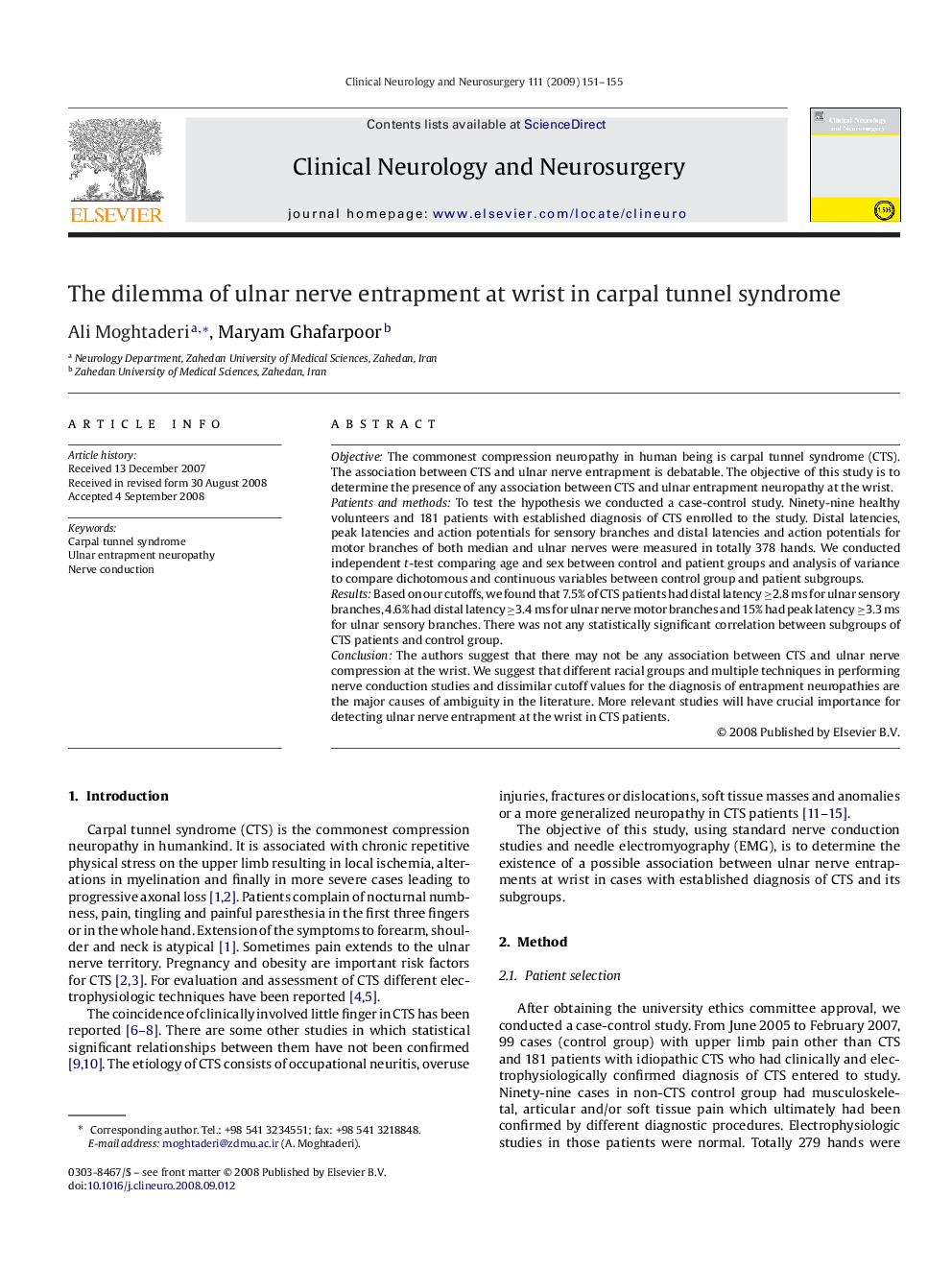| Article ID | Journal | Published Year | Pages | File Type |
|---|---|---|---|---|
| 3042219 | Clinical Neurology and Neurosurgery | 2009 | 5 Pages |
ObjectiveThe commonest compression neuropathy in human being is carpal tunnel syndrome (CTS). The association between CTS and ulnar nerve entrapment is debatable. The objective of this study is to determine the presence of any association between CTS and ulnar entrapment neuropathy at the wrist.Patients and methodsTo test the hypothesis we conducted a case-control study. Ninety-nine healthy volunteers and 181 patients with established diagnosis of CTS enrolled to the study. Distal latencies, peak latencies and action potentials for sensory branches and distal latencies and action potentials for motor branches of both median and ulnar nerves were measured in totally 378 hands. We conducted independent t-test comparing age and sex between control and patient groups and analysis of variance to compare dichotomous and continuous variables between control group and patient subgroups.ResultsBased on our cutoffs, we found that 7.5% of CTS patients had distal latency ≥2.8 ms for ulnar sensory branches, 4.6% had distal latency ≥3.4 ms for ulnar nerve motor branches and 15% had peak latency ≥3.3 ms for ulnar sensory branches. There was not any statistically significant correlation between subgroups of CTS patients and control group.ConclusionThe authors suggest that there may not be any association between CTS and ulnar nerve compression at the wrist. We suggest that different racial groups and multiple techniques in performing nerve conduction studies and dissimilar cutoff values for the diagnosis of entrapment neuropathies are the major causes of ambiguity in the literature. More relevant studies will have crucial importance for detecting ulnar nerve entrapment at the wrist in CTS patients.
